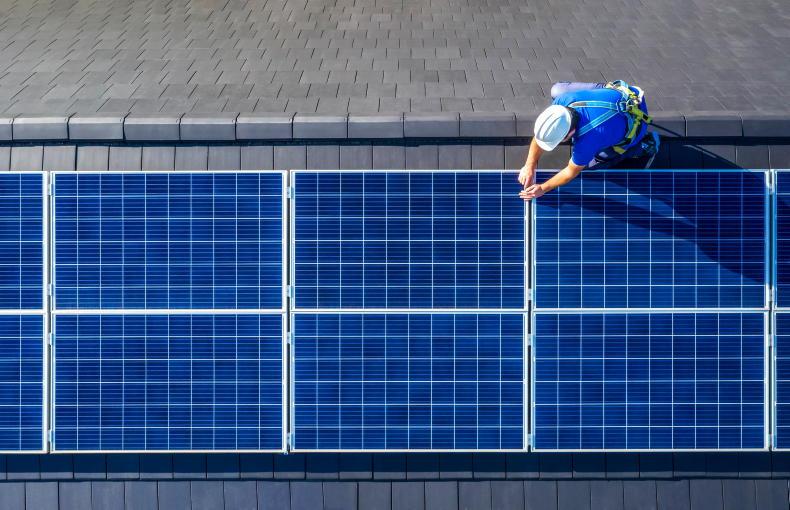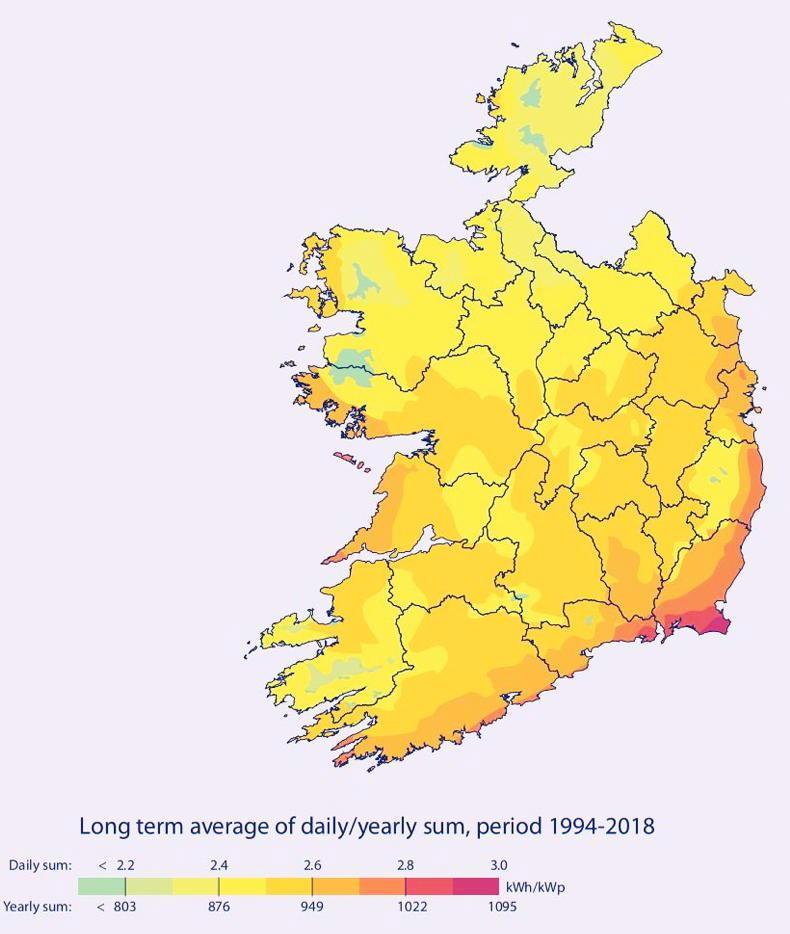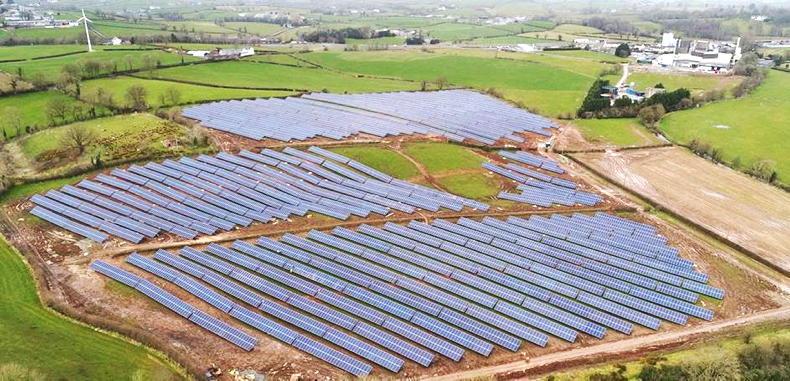You may have noticed an increasing number of solar panels being installed on house rooftops and farms recently. But have you ever wondered what these panels are and how they function? This article will take a closer look at the wonders of solar power.
Every day, the Earth receives an abundance of light from the sun. Plants use this sunlight through photosynthesis to produce food. Now, we have the capability to capture and convert this sunlight into electricity using solar photovoltaic (PV) panels.
Solar PV panels consist of numerous cells constructed from layers of semiconducting material, with silicon being the most common choice.
When sunlight hits these solar panels, they absorb the energy and generate direct current (DC) electricity. This DC electricity is then sent to a device known as a solar inverter, which converts it into alternating current (AC) electricity, the type of electricity used to power the appliances in your home.
Cloudy days
Solar cells don’t require direct sunlight to function; they can generate electricity even on cloudy days. Nevertheless, the stronger the sunlight, the more electricity they produce.

The economics of solar PV have changed considerably.
At the moment, most electricity produced on farms by solar PV panels is used on farms. That’s because producing your own electricity is considerably cheaper than buying electricity from the market. Furthermore, for every kilowatt of solar electricity a farmer produces on their farm, they displace one kilowatt of imported electricity, saving 331g of CO2 and reducing the overall carbon intensity of their farm. Any excess electricity generated by the solar panels, beyond what your farm needs, can be sent back to the national grid and that farmer can get paid for it.
Solar panel grants
Farmers can access a 60% grant under the Target Agricultural Mechanisation Scheme (TAMS III) for solar PV systems that generate electricity for their farms and farmhouses. However, this grant is limited to self-consumption with minimal scope for exporting electricity.
If a farmer intends to install a solar PV system for the purpose of exporting electricity and getting paid, they can secure grant aid ranging from €2,400 to €162,600 from the Sustainable Energy Authority of Ireland (SEAI).
Economics of solar panels
The economics of installing solar PV panels have been driven by generous grant aid and high energy prices. Energy prices reached record highs due to the recovery from the COVID-19 pandemic and the Russian invasion of Ukraine. While this increase in energy prices has impacted our pockets, it has transformed the economics of solar PV systems. Where payback periods of 7-10 years were common, now, along with grant aid, payback periods of around three years are common.
Where do solar panels work best?

The sunnier parts of Ireland have the greatest solar PV potential
Solar panels work best in direct sunlight. Therefore, the sunniest parts of Ireland will see the greatest potential for electricity generation. Figure 1 shows the sunniest parts of Ireland, expressed in solar irradiance.
The south and east of Ireland typically receive the most sun, while the north and west receive less. This doesn’t mean solar panels won’t work in those areas, but rather that the generation potential is lower.
This also explains why larger solar farms, which are springing up around the country, are typically located in the sunnier parts of Ireland.
What are solar farms?
You may have seen large fields of solar panels in various parts of the country. These are known as solar farms. In solar farms, solar PV panels are installed on extensive areas of land with the sole purpose of generating electricity and supplying it to the national grid. Solar farms come in a range of sizes, typically ranging from 5 acres up to 300 acres in size. By 2030, there could be up to 40,000 acres of solar farms in operation. Farmers often lease their land to solar farm developers, and in some cases, they can continue to graze animals, namely sheep, underneath the solar panels.
You may have noticed an increasing number of solar panels being installed on house rooftops and farms recently. But have you ever wondered what these panels are and how they function? This article will take a closer look at the wonders of solar power.
Every day, the Earth receives an abundance of light from the sun. Plants use this sunlight through photosynthesis to produce food. Now, we have the capability to capture and convert this sunlight into electricity using solar photovoltaic (PV) panels.
Solar PV panels consist of numerous cells constructed from layers of semiconducting material, with silicon being the most common choice.
When sunlight hits these solar panels, they absorb the energy and generate direct current (DC) electricity. This DC electricity is then sent to a device known as a solar inverter, which converts it into alternating current (AC) electricity, the type of electricity used to power the appliances in your home.
Cloudy days
Solar cells don’t require direct sunlight to function; they can generate electricity even on cloudy days. Nevertheless, the stronger the sunlight, the more electricity they produce.

The economics of solar PV have changed considerably.
At the moment, most electricity produced on farms by solar PV panels is used on farms. That’s because producing your own electricity is considerably cheaper than buying electricity from the market. Furthermore, for every kilowatt of solar electricity a farmer produces on their farm, they displace one kilowatt of imported electricity, saving 331g of CO2 and reducing the overall carbon intensity of their farm. Any excess electricity generated by the solar panels, beyond what your farm needs, can be sent back to the national grid and that farmer can get paid for it.
Solar panel grants
Farmers can access a 60% grant under the Target Agricultural Mechanisation Scheme (TAMS III) for solar PV systems that generate electricity for their farms and farmhouses. However, this grant is limited to self-consumption with minimal scope for exporting electricity.
If a farmer intends to install a solar PV system for the purpose of exporting electricity and getting paid, they can secure grant aid ranging from €2,400 to €162,600 from the Sustainable Energy Authority of Ireland (SEAI).
Economics of solar panels
The economics of installing solar PV panels have been driven by generous grant aid and high energy prices. Energy prices reached record highs due to the recovery from the COVID-19 pandemic and the Russian invasion of Ukraine. While this increase in energy prices has impacted our pockets, it has transformed the economics of solar PV systems. Where payback periods of 7-10 years were common, now, along with grant aid, payback periods of around three years are common.
Where do solar panels work best?

The sunnier parts of Ireland have the greatest solar PV potential
Solar panels work best in direct sunlight. Therefore, the sunniest parts of Ireland will see the greatest potential for electricity generation. Figure 1 shows the sunniest parts of Ireland, expressed in solar irradiance.
The south and east of Ireland typically receive the most sun, while the north and west receive less. This doesn’t mean solar panels won’t work in those areas, but rather that the generation potential is lower.
This also explains why larger solar farms, which are springing up around the country, are typically located in the sunnier parts of Ireland.
What are solar farms?
You may have seen large fields of solar panels in various parts of the country. These are known as solar farms. In solar farms, solar PV panels are installed on extensive areas of land with the sole purpose of generating electricity and supplying it to the national grid. Solar farms come in a range of sizes, typically ranging from 5 acres up to 300 acres in size. By 2030, there could be up to 40,000 acres of solar farms in operation. Farmers often lease their land to solar farm developers, and in some cases, they can continue to graze animals, namely sheep, underneath the solar panels.








 This is a subscriber-only article
This is a subscriber-only article











SHARING OPTIONS: